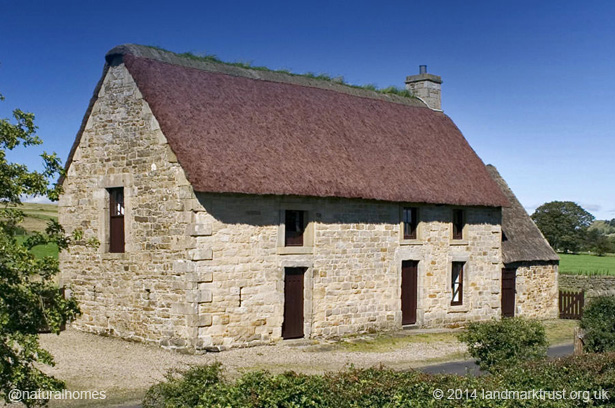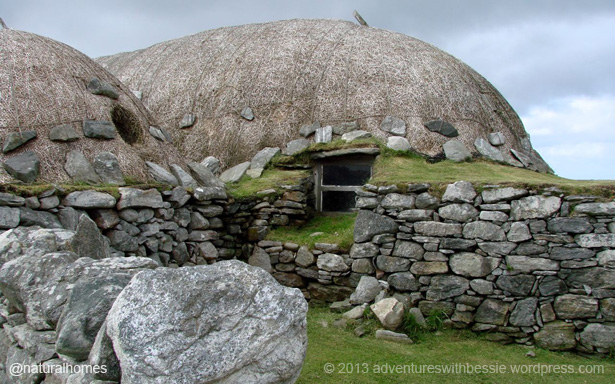Natural homes up on the Roof: Using natural materials for your
home.
|
|
|
|
|
|
|
|
| |
|
These homes all use different natural
materials for their roof demonstrating the material's
versatility, and in many cases longevity.
Many types of natural materials have been used
for roofing, but the majority fell from favour throughout the
20th century. This was partly because of improvements in transport.
It was
also because their care and maintenance depended less on the
availability of cheap local materials and more on the owner's ability to pay for services.
Over about a century of development this path has disabled
many people from building and maintaining their homes. If you would
like to learn how to build with natural materials search
through our
natural building workshops.
|
|
|
|
|
|
|
|
|
|
|
|
|
|
|
These are Italian
Trulli, dry stone homes usually made with
limestone without any mortar. Dry stone building is part of the heritage of this
region of Italy where many of the fields are divided by
dry stone walls. The roofs of the trulii are built with two skins:
an inner skin of limestone voussoirs (wedge-shaped stones forming
the curved parts of an arch) capped by a closing stone, and an
outer skin of limestone slabs that are slightly tilted downward
to shed rain. Here's a video of a
trulli roof being built.
|
|
| |
Find out how the trulli roof is
built via the video button above

|
|
|
|
|
|
|
|
|
|
|
|
|
|
|
This is
Causeway House in Northumberland,
England. It
is a rare surviving example of a building thatched with heather, a
feature once fairly common in upland areas of England and
Scotland. Wind blows through heather so it must sit on layers of
turf underlay. The heather is a first line of defence shedding
much, but not all of the rain. The heather stalk is tied down with
brier and stuck with clay. The ridge is made from turf. Amongst the
various thatching material
heather fares well lasting 20-30 years.
|
|
 |
|
|
|
|
|
|
|
|
|
|
|
|
This is an art studio in India built by Biju of
Thannal Hand Sculpted Homes.
It is made using bamboo with a palm
leaf roof and coconut leaf walls. This
video
shows the
palm leaf being harvested and used to thatch a similar building. Biju is using palm leaf for thatching to show locals its value as
a sustainable crop to encourage them to plant palm trees restoring
them to a viable population in this part of India. |
|
| |
Find out how palm leaf thatch is
done via the video button above

|
|
|
|
|
|
|
|
|
|
|
|
|
|
|
|
Reed |
|
|
This is a
reed thatched roundhouse at Felin Uchaf in Wales.
Reeds grow best in salty water and are common in marshy
estuaries. It grows 4 to 8 feet (1.2 to 2.4 m) tall. It is
harvested in the winter until the young spring shoots begin to
grow. Harvesting the reed encourages the production of tall,
sturdy and straight reeds ideal for thatching. Harvesting the reed
is a demanding job wading through cold water in freezing winter
weather cutting 12 inch (30 cm) bundles and stacking them together
in a group of six, known as a 'fathom'. Video
No.1
shows how reeds are harvested and
No.2
the thatching of a
cottage with Norfolk reed.
|
|
| |
How to harvest No.1 and thatch No.2
with reed via the video buttons above

|
|
|
|
|
|
|
|
|
|
|
|
|
|
|
|
Bamboo |
|
|
Bamboo is a grass that grows incredibly quickly, up to 1m (3ft)
per day. The high silica content in bamboo means it cannot be easily
digested by termites. Additional soaking in
borax salt
makes bamboo a reliable building material. In this video you will see
how to make shingles with bamboo.
|
|
| |
Find out how to make bamboo shingles via the video button above

|
|
|
|
|
|
|
|
|
|
|
|
|
|
|
A traditional green roof uses turf, not to act as a barrier to the
rain but to keep birch bark flat and in place. It's the birch
bark which is actually keeping the roof dry. You will see the edges of the bark curling out from under the turf
on the left of this log cabin in Sweden. A
green roof like this will last about 40 to 50 years. Here are some
more
green roofs from around the world, although not all built in
the traditional way. This
video
has some sound green roof advice from Michael
G. Smith.
|
|
| |
Green roofs look beautiful and help
to keep the building cool but ...

|
|
|
|
|
|
|
|
|
|
|
|
|
|
|
This is a roof made using a seaweed called eelgrass.
It's one of the traditional homes on the island of Læsø in
Denmark. Because of the high concentration of salt in
eelgrass it doesn't
burn and has a very long lifespan. A
seaweed roof
typically lasts 200 years, some have lasted as long as 400 years.
This
video
(in Danish) shows how the eelgrass is stacked
loosely above a barrier of branches fixed to the eaves of the
roof.
|
|
| |
How to build a thatched roof that
can last up to 400 years

|
|
|
|
|
|
|
|
|
|
|
|
|
|
|
The roof of
Lisa
& Rich's cob home is tiled with western red cedar shingles.
The walls are straw bale on
the north and east with sculpted swirls of cob on the south and west.
This gives a good introduction to
making shingles, in this case oak. A shingle
roof, depending on the species of wood and the pitch of the roof, can last between
30-80 years. Overhanging trees near a shingled roof will shorten
its lifespan. |
|
| |
How to make oak shingles that can
last up to 80 years

|
|
|
|
|
|
|
|
|
|
|
|
|
|
|
This is a
blackhouse at Arnol, Lewis, Scotland. It's one of the
few blackhouses that survive in the settlement. The timbers of the
home were generally made from driftwood and in some cases whale
bone. Over the timber roof a layer of turf was placed but leaving
an unturfed region on the ridge of the roof to allow smoke from
the central fire to escape through the oat straw thatch. A net
anchored with stones helps to keep the thatch in place.
|
|
 |
|